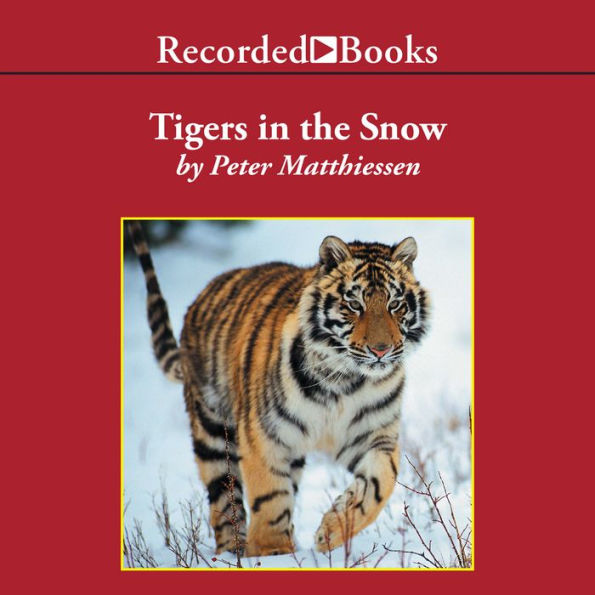Read an Excerpt
The beautiful wild region known as the Russian Far East curves south along the Sea of Japan like a Veal claw of Siberia, from the vast delta of the Amur River to the North Korean border, and its coast range-the Sikhote-Alin-extending southward some 600 miles between the Ussuri River and the sea is the last redoubt of Panthera tigris altaica, the Siberian or Manchurian tiger, which ranged
formerlythroughout northeastern China (or Manchuria) and the Korean penninsula, and west as far as Mongolia and Lake Baikal. In the past century, its range has been reduced almost entirely to the Amur-Ussuri watershed, and today the most appropriate name for the lardest of the workd's great cats is the Amur tiger.
The Sikhote-Alin, at latitude 40 to 50.5 degrees, is a rangeof mountains rarely more than 6,ooo feet high. Its forest is temperate pine-and-hardwood taiga with fir and spruce at higher altitudes, subsiding as it descends in the north into boreal conifers of sprucemuskeg tundra (the original taiga, or "land of little sticks," refers to those stunted spruce; today the term is used more often as a rough equivalent of "wilderness"). Here the brown bear, lynx, wolf, and sable of the north cross tracks with the black bear, tiger, and leopard of the broad-leafed forests farther south, in an astonishing mammalian faunaunlike any other left on earth.
Ussuria or Ussuri Land was all but unknown to the West until early in the twentieth century, when it was explored by Vladimir K. Arseniev, a young army lieutenant, geographer, and naturalist who made three expeditions there between 1902 and 1908 in order to map the wild Primorski Kral, or Maritime Province. Arseniev was subsequently described as "the great explorer of Eastern Siberia" by the Arctic explorer Fridtjof Nansen, who expressed astonishment that this region of the Asian land mass had remained less known than the wildest Indian countries of North America.
Traveling on horseback and on foot, Arseniev was guided by a man named Dersu, an indigenous hunter-trapper of the Tungus-Manchu tribes (Altaic Tatar peoples related to the Tibetans and Mongolians and also to those ancient hunters who traveled east across the Chukchi Peninsula and Beringia to North America). As a young man, Dersu had survived a terrible mauling by a tiger; he was exhausted and near death from loss of blood when his wife found him in the taiga after days of tracking.
Like all aboriginal hunters, Dersu feared the tiger's immense strength and ferocity but also revered it as the very breath and spirit of the taiga. These Tungus peoples considered it a near-deity and sometimes addressed it as "Grandfather" or "Old Man." The indigenous Udege and Nanai tribes referred to it as "Amba" or "tiger" (it was only the white strangers-the Russians-who translated that word as "devil"). To the Manchurians, the tiger was Hu Lin, the king, since the head and nape stripes on certain mythic individuals resembled the character Wan-dathe great sovereign or prince. "On a tree nearby fluttered a red flag," Arseniev wrote, "with the inscription: `San men dshen vei Si-zhi-tsi-go vei da suay Tsin tsan da tsin chezhen shan-Zin,' which means `To the True Spirit of the Mountains: in antiquity in the dynasty of Tsi he was commander-in-chief for the dynasty Da Tsin, but now he guards the forests and mountains.' "
Because the tiger protected the precious ginseng root from the Manchurians, Dersu would never shoot at Amba, and he entreated Arseniev not to shoot him, either. (Indigenous peoples throughout southern Asia avoided killing tigers, all except man-eaters, and even then might hold a ceremony of regret in which it was explained to other tigers how their kinsman had erred and must now forfeit its life.) Arseniev and Dersu, exploring Ussuri Land in every season, had many encounters with Amba, to whom they lost their dog, and one day the lieutenant expressed regret that he had never actually laid eyes on this secretive presence. Dersu cried out, "Oh no! Bad see him! Men [who] never see Amba . . . happy, lucky men . . . Me see Amba much. One time shot, miss. Now me very much fear. For me now one day will be bad, bad luck." (In keeping with the conventions of the era, Dersu's speech was rendered in the same pidgin English spoken to white sahibs by Indian scouts, African bearers, and other trusty native guides in memoirs from all around the colonial world.) Amba pervades Arseniev's journals, an imminent menace that the doughty Russian begins to dread. "We stood there silently a few minutes in the hope that some sound would betray the presence of the tiger, but there was the silence of the grave. In that silence I felt mystery, and fear."
In Arseniev's time, the tiger was already under heavy pressure from foreign hunters. Both Russians and Manchurian Chinese claimed these remote hunting grounds, which were rich in the precious ginseng root and the lustrous fur of the large arboreal weasel called the sable; these invading strangers, and the Koreans, too, ignored the rights of the indigenous peoples, who were mainly discounted as tazi by the Russians (from the Chinese da-tst, or "foreigners"-that is, "others") despite their long prior habitation- at least 6,ooo years, according to the carbon dating of petroglyphs found along the upper Amur, which include representations of the
great northern tiger that in other days was found there, too.
Reprinted by permission of Farrar, Straus & Giroux, LLC, New York, NY USA. From Tigers in the Snow by Peter Matthiessen. Copyright (c) 2000 by Peter Matthiessen. All rights reserved.



